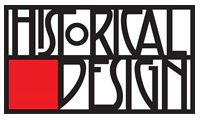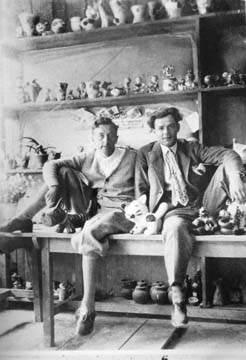Product Description
Walter Bosse / Austrian Keramik Art Deco Glazed Pottery Bookends c.1930


WALTER BOSSE (1904 – 1979) Austria
Bookends c. 1930
Hand-painted and glazed earthenware
For more information see: Walter Bosse: Leben, Kunst, und Handwerk, 1904-1979, Cherica Schreyer-Hartmann, Hans Hagen & Johanna Hottenroth (Vienna: Verlag Christian Brandstätter, 2000), Wiener Keramik: Historismus, Jugendstil, Art Déco, Waltraud Neuwirth, (Braunschweig: Klinkhardt & Bierman, 1974), pp. 114-115.
H: 5″ x D: 4 1/2″ x W: 5 1/4″
Price: $2,250
Walter Bosse (November 13, 1904–December 13, 1979) was a Viennese artist, designer, ceramist, potter, metalworker, and craftsman noted for his modernist bronze animal figurines and grotesques.
Walter Bosse, born November 13, 1904, in Vienna, was the son of artists Luise and Julius Bosse. His father worked as a portrait painter at the imperial court. Walter Bosse attended the Wiener Kunstgewerbeschule (Vienna School of Applied Arts) from 1918 to 1921, where he studied ceramics under Michael Powolny, and ornament under Franz Cižek. He then attended the Münchner Kunstgewerbeschule (Munich School of Applied Arts). During his schooling he was given the opportunity to sell his work at the Wiener Werkstätte by Josef Hoffmann, who became a mentor to Bosse. Bosse opened his own shop in Kufstein in 1923.
Bosse’s work grew in popularity and a number of his pieces were shown at the International Exposition of Modern Industrial and Decorative Arts in 1925. He started designing for Augarten Porcelain Works (1924) as well as Goldscheider (1926) and Metzler and Ortloff (1927). In 1931, to meet increasing demand (especially in America), Bosse opened up a bigger shop in Kufstein, but by 1933 he started to feel the effects of the economic depression. By 1937, the Kufstein works were closed.
In 1938, now divorced, Bosse moved back to Vienna where he founded Bosse-Keramik (Bosse Ceramics), which expanded under the new name “Terra” to include glass, toys, textiles. and a variety of craft items for the gift market. In the late 1940s, Bosse began experimenting with brass by giving his ceramic figures a metal coating to protect them from breakage. In the early 1950s, Bosse began his “Black Golden” line of brass figurines. He transitioned all of his efforts to brass. The figures became popular worldwide.
Despite Bosse’s success with his brass figures, it was still a difficult time for him financially. In 1953, partly fleeing from financial troubles, he moved to Iserlohn where he set up a new shop and continued production. Bosse also collaborated with Karlsruhe State Majolika Works on a number of pottery animal figures. In 1958, he designed for Achatit Schirmer in Cologne. Bosse also turned his efforts to small, everyday items such as letter openers, keyrings, corkscrews, and pencil holders, all of which bear his distinctive “black and gold” look. A number of these Bosse designs began to gain widespread popularity internationally.
Walter Bosse / Austrian Keramik Art Deco Glazed Pottery Bookends c.1930
TIM LIDDY
“Oy Vey” (1979) The game where you become a JEWISH MOTHER! Get your sons to become doctors—Get your daughters married to doctors! If not, OY VEY! 2008
Oil and enamel on copper, plywood back
Signed in script: Tim Liddy, red circular ring, “circa 1979”, 2008
Provenance: William Shearburn Gallery, St. Louis, MO
H: 10 ¼” x W: 20 ½” x D: 1 ¾”
With his recent paintings, Liddy has both reasserted the construct of hyperrealist painting and developed a thoroughly unique advancement of that mode by extending the cultural reality of the indexed original. Based on the illustrated box lids of vintage board games, Liddy has recontextualized a subject, which evokes the underlying rules of life. Painted on copper or steel in the precise dimensions of the original, the metal is then manipulated to demonstrate the exact rips and tears from years of usage and includes trompe-l’oeil renditions of the scotch tape that might be holding the cardboard box together, the assorted stains, or the various graffiti of time. Liddy leaves no possibility of ambivalence, these works speak to a concurrent understanding of their original object identity and to themselves as works of art engaged in historical and psychological dialogue.
